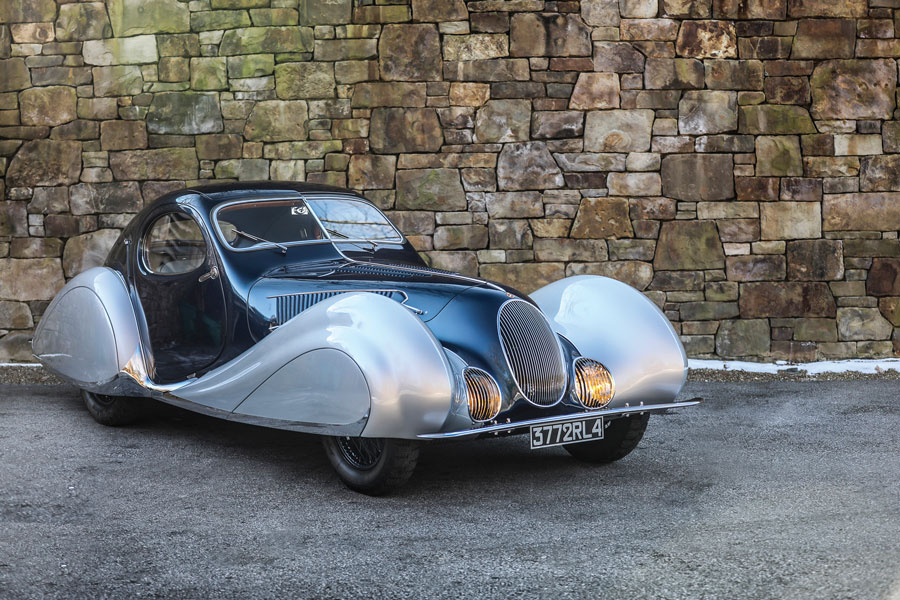Chassis Number: 90107
The Talbot-Lago T150C SS presented here, chassis 90107, is widely regarded as the most beautiful and unique of the Figoni-bodied Teardrops.
Of the precious few Figoni et Falaschi Teardrops built, 90107 is the only original-bodied example of the definitive Modéle New York design with fully enveloping front fenders. A prizewinner at the 1938 Concours d’Elegance Fémina, this marvelous machine has been owned by a limited roster of caretakers since its arrival on U.S. soil in 1939. Remarkably, this European classic spent nearly eight decades in Southern California, the locus of American car culture, where it led a fantastic existence — raced by the legendary Tommy Lee on the dry lake beds of the Mojave Desert, hidden away for decades by pioneering French-car collector Lindley Locke, and then rediscovered and restored to its original splendor by The Nethercutt Collection.
Following its restoration, this Talbot-Lago was debuted at the 2005 Pebble Beach Concours d’Elegance, earning a well-deserved First in Class trophy. This victory was followed by a string of Best of Show awards, including its outing at the 2007 Amelia Island Concours d’Elegance. The current owner, a private collector with a passion for fine art and Art Deco automobiles, has continued to preserve the Teardrop in pristine condition. He has not exhibited it publicly, giving its next caretaker the distinct pleasure of returning it to the show field.

